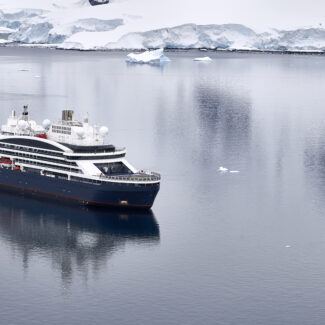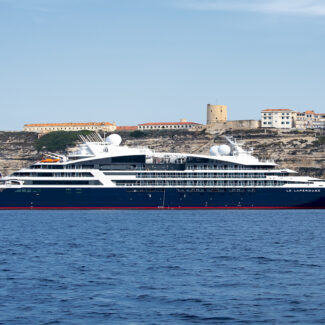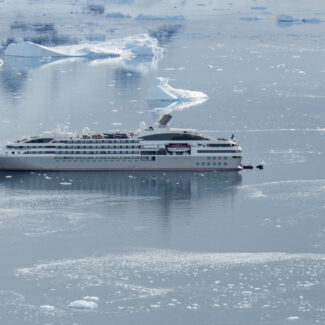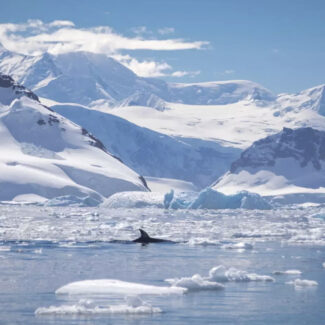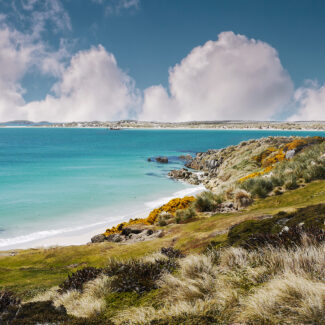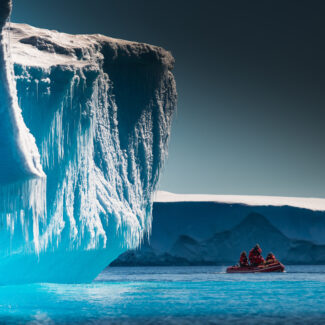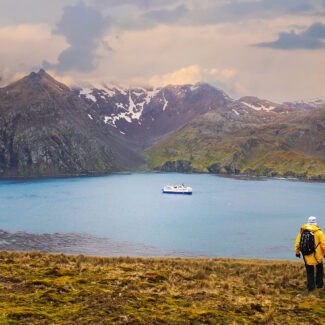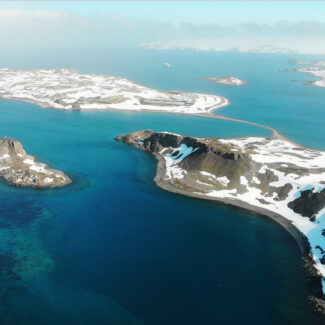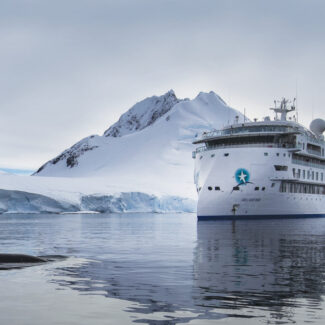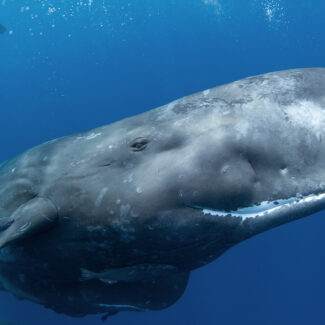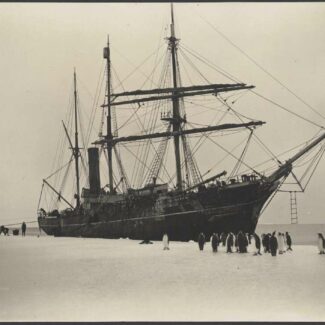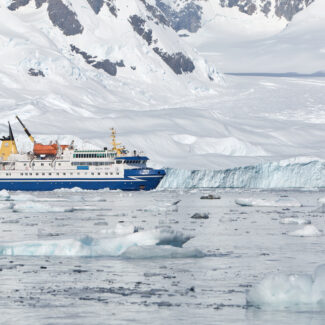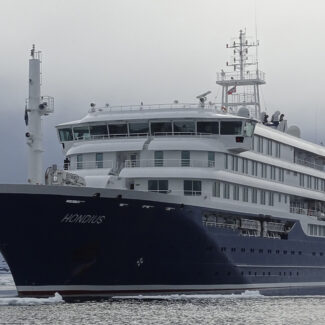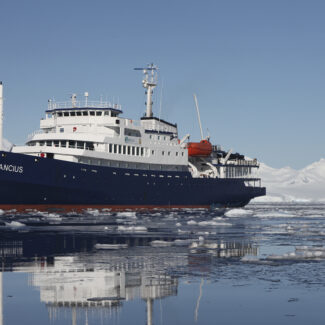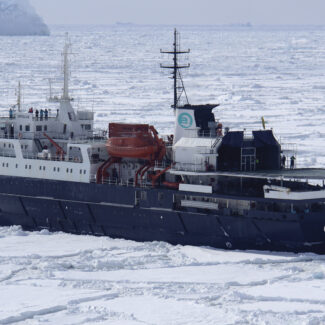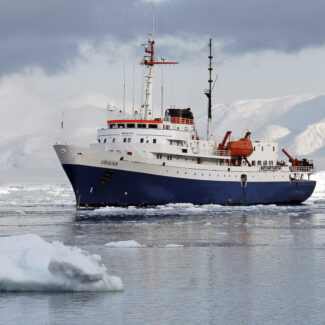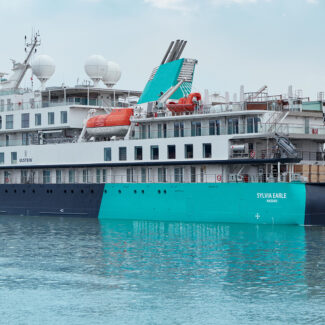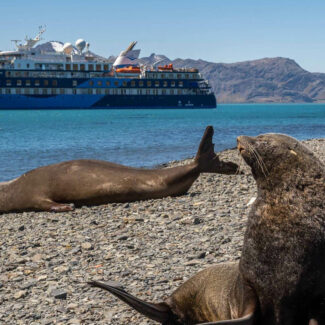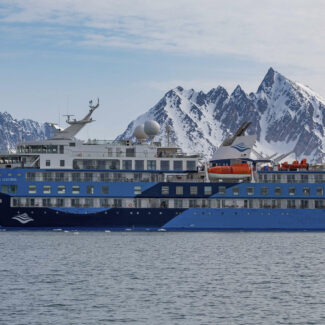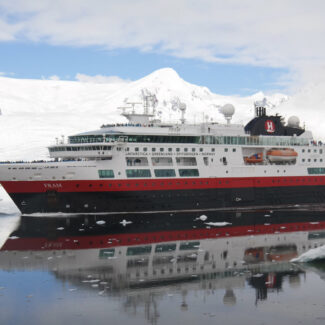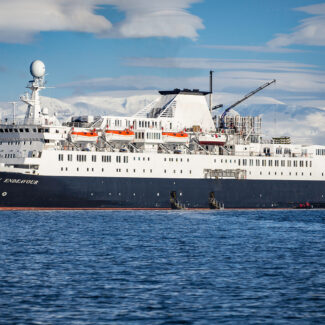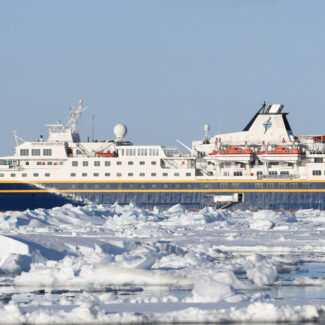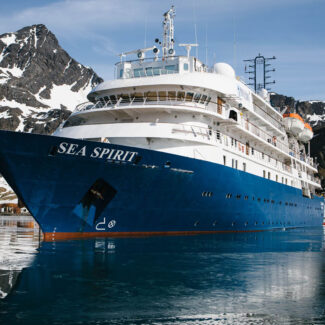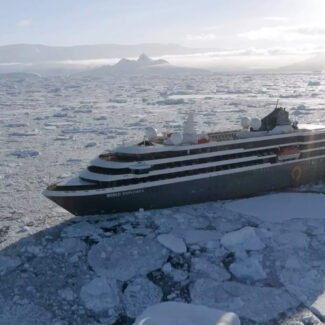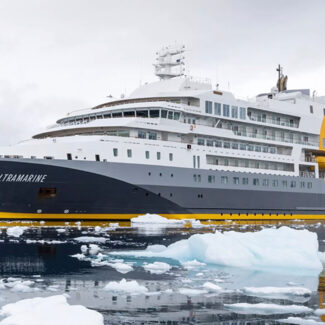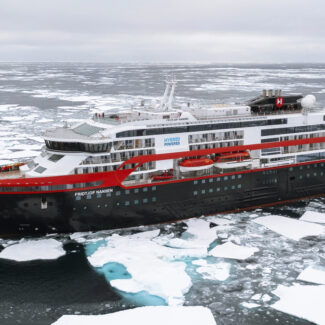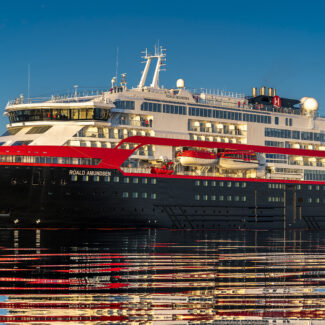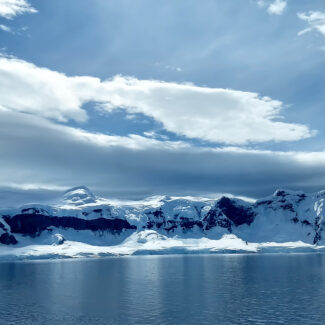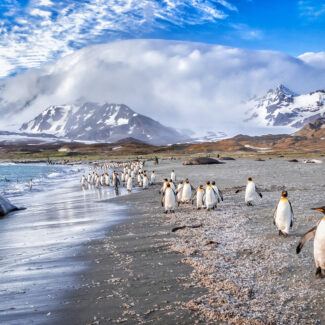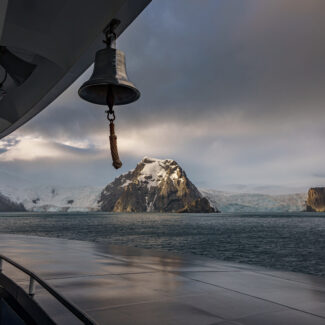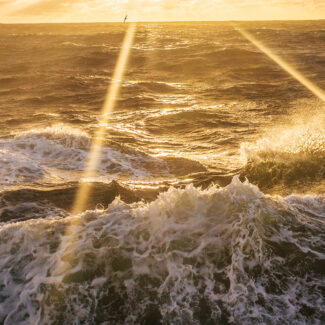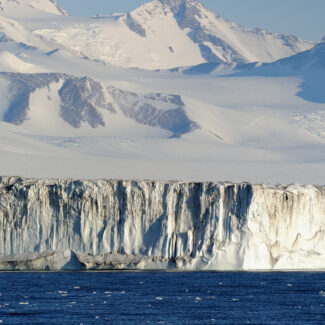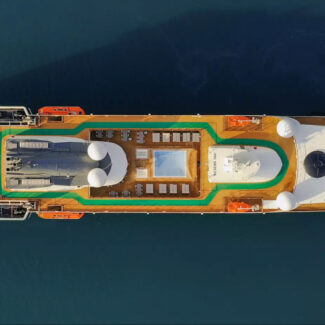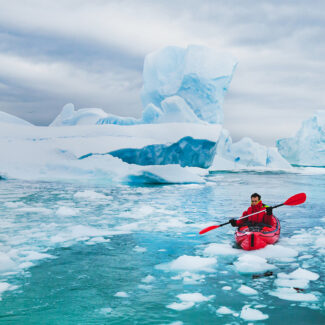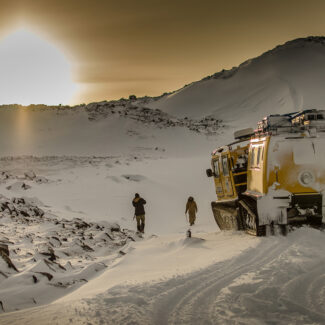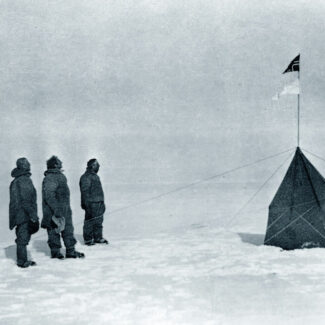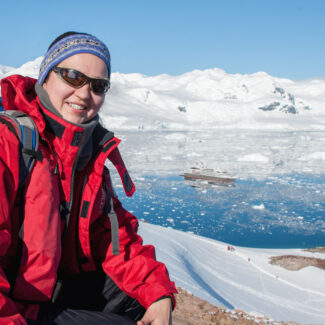Las 10 iglesias y religiones de la Antártida
- Religion in Antarctica
- Churches in Antarctica
- 1. Trinity Church
- 2. Chapel of Santa Maria Reina de la Paz
- 3. St. Ivan Rilski Chapel
- 4. St. Volodymyr Chapel
- 5. Chapel of Santisima Virgen de Lujan
- 6. Chapel of Our Lady of the Snows
- 7. San Francisco de Asis Chapel
- 8. Chapel of the Snows
- Churches in the Sub-Antarctic
- Some Other Churches With Antarctic Connections
- Tying the Knot in Antarctica
Those who’ve visited Antarctica can attest to the power of this wildest and least-trammeled of continents in evoking deep-rooted awe: a sense of the sublime that can manifest as an almost religious response. Call it “polar piety,” perhaps, a feeling of reverence and gratitude inspired by flawless ice expanses, spectacular wildlife spectacles, and other of the primal sights that define an exploration of the White Continent.
Beyond this polar piety—and despite lacking an indigenous or even permanent population—in Antarctica you can also find individuals and even houses of worship that reflect organized religion.
Religion in Antarctica
Antarctica draws people from all around the world to work at and staff its research stations, maintained by some 42 different countries. This multinationality—and the spirit of international cooperation and management that defines Antarctica’s political status—is mirrored in the wide variety of religious beliefs encompassed by the White Continent’s non-permanent population.
Numerous religions are represented in Antarctica, but Christianity is most prominent. Recorded Christian practices on the continent date back at least to the early 20th century. An Anglican priest, Arnold Spencer-Smith, was the first member of any clergy to visit Antarctica, as a chaplain on the Ernest Shackleton-led Imperial Trans Antarctic Expedition.
Churches in Antarctica
Eight churches and chapels are found in Antarctica proper, all at or near research stations. While each is affiliated with some form of Christianity, one in particular is non-denominational and has also hosted services and ceremonies of different faiths altogether.
And it’s important to stress that these churches aren’t the only sites of religious worship in Antarctica. For example, research bases may have dedicated prayer rooms for Muslims and others to practice their faith.
1. Trinity Church
This beautiful wooden church is considered the southernmost Eastern Orthodox church on Earth, although there is an Eastern Orthodox chapel—the St. Ivan Rilski Chapel—a bit farther south on Livingston Island (see below). It was constructed from Siberian pine in the mid-1990s in Russia, then dismantled and transported by boat to King George Island, where it stands not far from the Russian Bellingshausen Station.
Hieromonks—that is, Eastern Orthodox monks who also function as priests—from the central monastery of the Russian Orthodox Church, the Trinity Lavra of St. Sergius, volunteer to staff the Trinity Church on a rotating basis.
2. Chapel of Santa Maria Reina de la Paz
The Chapel of Santa Maria Reina de la Paz (Chapel of St. Mary Queen of Peace) is another church on King George Island. It’s situated in the Chilean base and civilian settlement of Villa Las Estrellas, where its deacon resides, and falls under the jurisdiction of the Military Bishopric of Chile. In a uniquely Antarctic architectural quirk, the chapel is constructed from metal shipping containers.
3. St. Ivan Rilski Chapel
The Bulgarian research base of St. Kliment Ohridski on Livingston Island in the South Shetlands hosts this Eastern Orthodox chapel, which honors the patron saint of Bulgarians. The original chapel, consecrated in 2003, lay flanked by the Balkan Snowfield. In 2011, a new chapel building was erected below Pesyakov Hill, closer to the research base’s main cluster of buildings.
4. St. Volodymyr Chapel
This tiny Ukrainian/Eastern Orthodox chapel, built in 2011, resides at the Vernadsky Research Base on Galindez Island, part of the Argentine Islands of the Wilhelm Archipelago off the Antarctic Peninsula. The British originally established the research base in 1947, but it’s been under Ukrainian ownership since 1996. The chapel is dedicated to Vladimir the Great, who reigned as Grand Prince of Kiev in the late 10th and early 11th centuries.
5. Chapel of Santisima Virgen de Lujan
The Roman Catholic Chapel of the Blessed Virgin of Lujan serves staff and visitors at Argentina’s Marambio Station on Marambio (Seymour) Island off the Antarctic Peninsula. The strikingly orange-hued steel church comes topped with a belltower.
6. Chapel of Our Lady of the Snows
Perhaps the most amazing-looking of any Antarctic church, the Chapel of Our Lady of the Snows lies within an ice cave at the Argentine research station of Belgrano II Base, situated on the Confin Coast of Coats Land. This ethereal glazed recess, part of a network of ice tunnels and alcoves, serves as a Catholic chapel and falls under the purview of the Roman Catholic Archdiocese of Bahía Blanca in Buenos Aires. It’s considered the southernmost place of religious worship in the world.
7. San Francisco de Asis Chapel
This Roman Catholic chapel was established in 1976 at Argentina’s Esperanza Base, which lies at the very northern tip of the Antarctic Peninsula. The San Francisco de Asis Chapel saw Antarctica’s very first baptism (that of Emilio Marcos Palma, the first person known to be born on the White Continent) and first religious wedding ceremony, both in 1978.
8. Chapel of the Snows
The Chapel of the Snows is a non-denominational Christian church in Antarctica, originally built in 1956 at the U.S. McMurdo Station on Ross Island. (The original chapel burned down in 1978; its replacement was completed in 1989.) Along with Catholic, Protestant, and other Christian services, the chapel has hosted everything from Buddhist and Baha’i gatherings to Alcoholics Anonymous meetings. Among the Chapel of the Snows’ defining features is a stained-glass depiction of the White Continent.
The current chapel building’s days are limited: It’s slated to be torn down as part of the Antarctic Infrastructure Modernization for Science (AIMS) project, which aims to remove some of McMurdo’s older buildings and consolidate its structures into a smaller, more energy-efficient complex.
Churches in the Sub-Antarctic
Two other churches lie within the Sub-Antarctic zone: the so-called Whalers Church of South Georgia, part of the British overseas territory of South Georgia and the South Sandwich Islands, and Notre-Dames des Vents in the French-controlled Kerguelen Islands.
9. The Whalers Church
This South Georgia Island church, set within the former whaling station of Grytviken, comes drenched in history. Built by Norwegian whalers in 1913—it was consecrated that year on Christmas Day—the Neo-Gothic church belonged to the Church of Norway for 100 years before being transferred to the Church of England. Also known as the Norwegian Anglican Church, it now falls within the Anglican Communion’s Parish of the Falkland Islands. Quiet most of the time—Grytviken lacks permanent inhabitants—the Whalers Church does host the occasional wedding ceremony.
Notably, the church held the funeral service for the great Antarctic explorer Sir Ernest Shackleton in 1922. He’s buried in the Grytviken Cemetery not far away.
10. Notre-Dames des Vents
This Catholic church—the Church of Our Lady of the Winds—was built in the 1950s in Port-aux-Francais, the primary settlement in the Kerguelen Islands. Port-aux-Francais is situated on the Courbet Peninsula, the northeastern reach of the main island in the Kerguelens, Grand Terre. The church’s squat concrete building comes lined with stained-glass windows.
Some Other Churches With Antarctic Connections
Some houses of worship many thousands of miles from Antarctica will always be inextricably linked in one way or another to the White Continent.
Church of St. Peter (Binton, England)
Take, for instance, the Church of St. Peter in Binton, a village in Warwickshire, England. Within this Anglican church, you’ll find a striking stained-glass memorial to one of the most iconic expeditions in Antarctic history. The Scott Window, designed in 1915, honors Sir Robert Falcon Scott and his companions on their ill-fated march to the South Pole. Scott was actually the brother-in-law of the Binton church’s rector.
Church of St. Saviour (Lyttelton, New Zealand)
Another non-Antarctic church with Scott connections, at least in its prior incarnation, is the Church of St. Saviour in Lyttelton, New Zealand. The original church was where Scott and his crew worshipped ahead of both the Discovery y Terra Nova expeditions. The current St. Saviour chapel was relocated to its present site after the 2010 and 2011 Canterbury earthquakes destroyed the church that previously stood here, the Holy Trinity Church.
Tying the Knot in Antarctica
To close things out here, it’s worth noting that some of the churches we’ve profiled in this article may be available for private wedding ceremonies in perhaps the most unique place in the world to tie the knot. You can learn more in our dedicated guide to Antarctica weddings and honeymoons.
Descargo de responsabilidad
Nuestras guías de viaje tienen únicamente fines informativos. Si bien nuestro objetivo es proporcionar información precisa y actualizada, Antarctica Cruises no hace ninguna representación en cuanto a la exactitud o integridad de cualquier información en nuestras guías o encontrado siguiendo cualquier enlace en este sitio.
Antarctica Cruises no puede y no aceptará responsabilidad por cualquier omisión o inexactitud, o por cualquier consecuencia derivada de ello, incluyendo cualquier pérdida, lesión o daño resultante de la visualización o uso de esta información.


